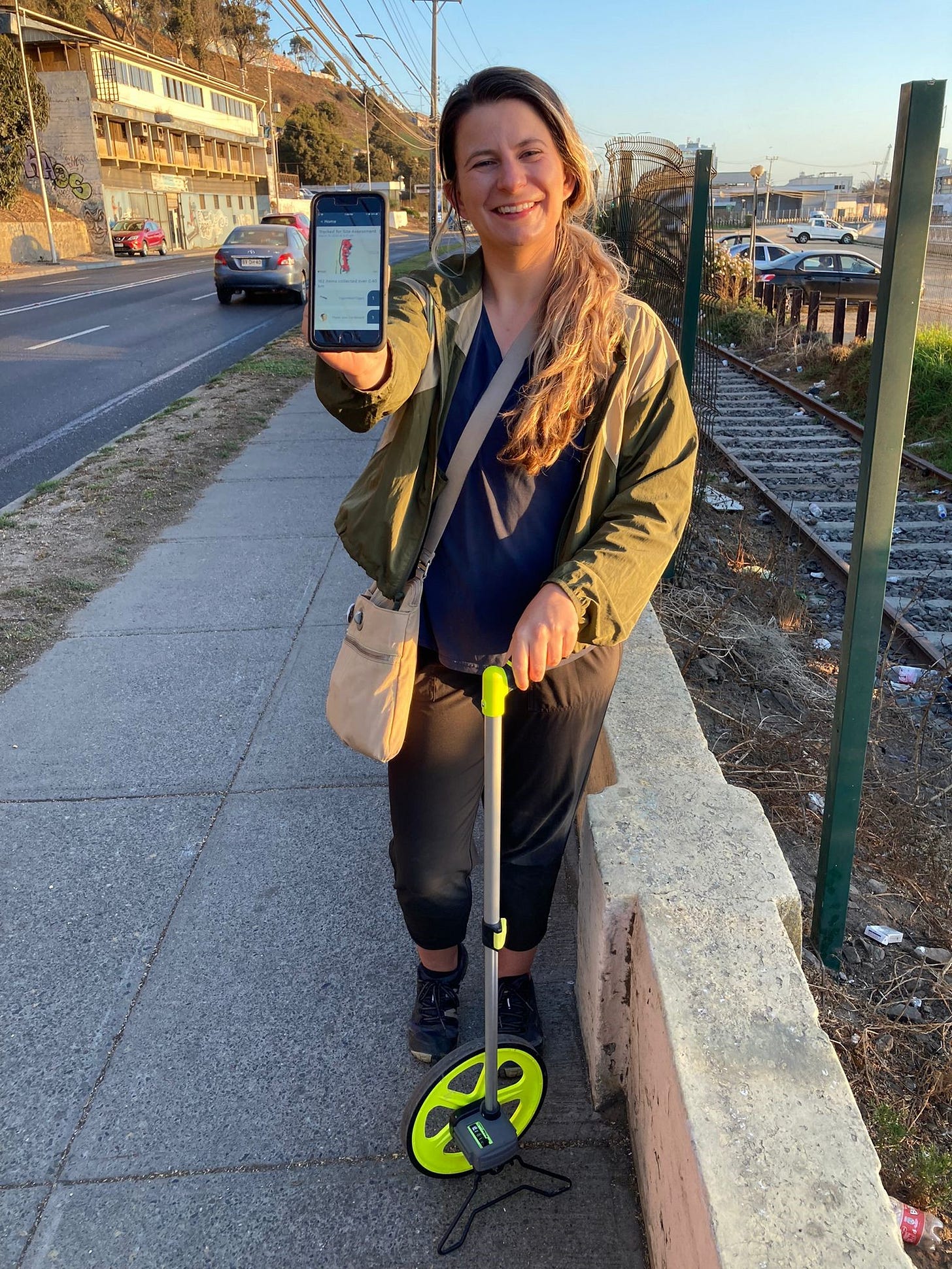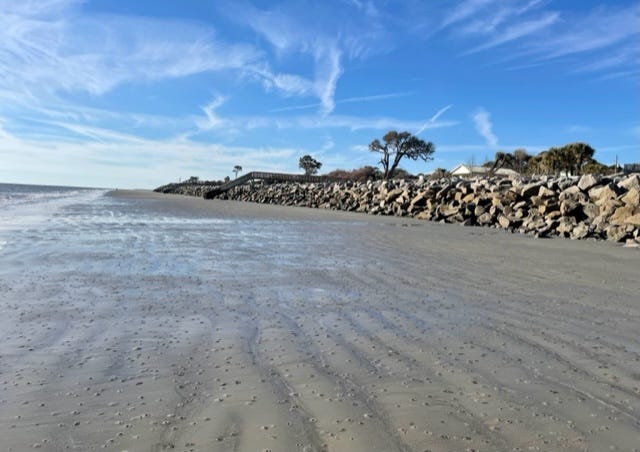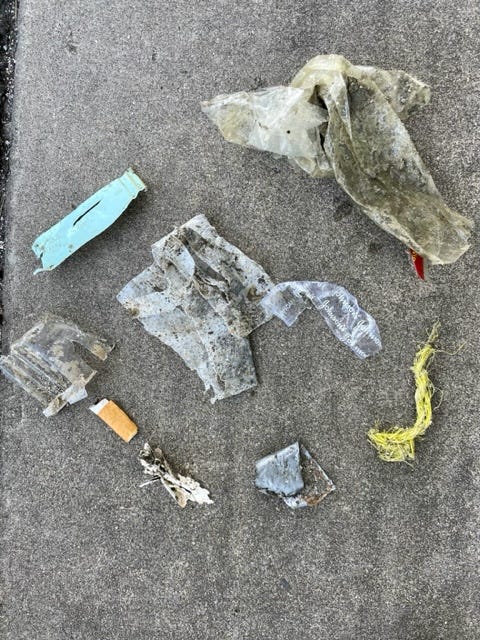Debris Tracker
Fighting against a shrink-wrapped world
While researching a community science project this week, I learned a new-to-me term that some climate scientists have been referring to for years: the Plastisphere. Among the definitions I found was one from a 2022 academic report at UC Davis: “The Plastisphere is a diverse microbial community living on bits of plastic floating in the ocean. These communities are distinct from the surrounding water suggesting that plastic serves as its own habitat in the ocean.” The idea is disturbing. It is simply weird to think that an entire ecosystem––predators, prey, food, reproduction, everything––could be floating along living the good life clinging to the slimy green sides of an old Mountain Dew bottle. Or, to a discarded scuba mask, as photographer Andrea Westmoreland’s photo from DeLand, FL shows.
The notion of a Plastisphere is worth looking into. I hope you do your own research, ponder what’s going on, talk it over with your family and friends. The thought of it gives me an uncomfortable shiver, making me wonder if the world is getting more shrink-wrapped every day.
For 20-plus years now, we’ve been told something like this:
“Put the plastics in the blue bin and you’re good. Someone else takes care of it from there.”
But no. Not so much.
Last year, Greenpeace made international headlines when it reported that less than 5 percent of what we put in our recycling system ever gets made into a new thing. Less than 5 percent. Again, check this out yourself, or read this October 2022 NPR story, “Recycling plastic is practically impossible––and the problem is getting worse. A troubling low point in the story is when Greenpeace reports that the plastics industry plans to triple production between now and 2050.
We need to do something.
I look in the mirror and see a community scientist who can do a little something.
With that sentiment leading the way, here’s your overview of Debris Tracker, a community science project I encourage you to try. What follows below is Debris Tracker information in three parts: overview, interview with a professional, my experiences. You like to skim, I do too.
But, by the end, I’m hoping you’ll find this Feb. 10 newsletter very much worth your time, and decide to download the app.
1. An overview of Debris Tracker.
This is an open data effort designed to help community scientists contribute data on plastic (and all types of litter) that is found in the natural environment. An overarching goal of Debris Tracker is to create a dataset that provides a big picture look at marine debris around the world that can lead to policy change and design improvement. Debris Tracker started in 2010 with volunteers and scientists using paper forms to log litter data. In 2011, the Debris Tracker app, which makes it easy for on-the-spot logging of trash data, was introduced. Today, some six million items have been logged in 90 countries around the world.

2. An interview with an expert.
Kathryn Youngblood is a UGA research engineer and the Citizen Science Director for Debris Tracker. By the time I spoke with her this week, I knew the basics of the program and had used it in six separate places, so we didn’t waste time on FAQs. I loved that we spent our interview time in a way that allowed her to give color to the program. These comments, a macro- to micro- bit of storytelling, are examples:
“A lot of these environmental issues and problems are so big and so widespread. Researchers couldn’t understand what’s going on without a powerful community science effort that inspires local action,” she told me. “We’ve seen so many small groups, community groups, do their own Debris Tracker projects. A N.C. teacher, for example, had her students use the paper log form of Debris Tracker to analyze waste and trash on the school grounds. The details were summarized, and a report was shared with cafeteria management. And, guess what? Changes were made. The cafeteria changed the packaging for some to-go items. I love projects like that. There is great momentum for the subject of plastics right now.”
Youngblood admitted that she sometimes feels discouraged by the whole plastics problem. “Plastic is difficult to control,” she said. “There is no control at all right now. Plastic is so useful and so long lasting. There is a daunting global system that relies on plastic.” Too often, she told me, she herself gets stuck in a grocery aisle trying to make a wise choice about something she needs to buy, but finds there are zero non-plastic options.
3. My experience with the Tracker.
I’ve used the Debris Tracker app six times. Most recently, I logged in all the trash I found on the northeast beach of Jekyll Island. I had come to the beach with my friend, Zora. For a few winters now, Zora and I have developed a “Jekyll in January” habit due to her job and my flexible schedule. Driving southeast on I-16, I told her all about Debris Tracker. I concluded by predicting, “That beach is so clean and wide at Jekyll. No way I’ll find trash there.” She listened, as we nodded together companionably. (Free tip and side note: Companionable nodding goes a long way toward helping you achieve pleasant things in life like the 19-year friendship I have with my friend Zora.)
As it turned out, I had a cake-and-eat-it-too experience at Jekyll. The beach was stunning, endless, and rich with sand dollars. Wearing a warm jacket, I relished my long walk in the chilly air with the sun on my face. As for my goal of mixing in a little trash seeking and documenting, well, sure, I did that too. In fact, during my beach outing I was able to fully test Debris Tracker without experiencing a trashy beach, and that, I like.
My walk was about 4 miles long. My first thought when my sneakers hit the sand, and I looked in both directions, was there’s no trash out here at all. All clear, all beautiful. I strode off toward the north, eventually zigzagging my patrol toward the rock seawall at the top of the beach, then down to the soggy shoreline. Every time I crossed the crunchy high tide line, I would bend low to analyze its texture. Eventually, the line yielded what I was looking for, some trash! The high tide area, a ribbon of tiny, shattered shells, seaweed bits and sandy clumps and bumps, is where I found most of the trash that day. I was happy to be on the duty, with Debris Tracker practically humming in the phone in my hand, ready to receive the news I had to share.
Near my Atlanta home, I sometimes use Debris Tracker during my regular exercise walks. I hope you will download it and try it. Realizing that it may feel challenging to get out your phone to log trash bits while you are on a walk, I have two thoughts:
Get to know Debris Tracker at home before you go outside in the bright light where it is much harder to see the screen to access what you need. A subset of that tip is to know that your big categories will come up in this order: Plastics, Metal, Glass, Rubber, Cloth, Fishing Gear, and Other. Alternatively, you can just find the paper log form at the Debris Tracker website and use that when you put on your community science hat. Later, at home, log in what you found. Youngblood said researchers prefer we use the app at the site of the litter because it gives them exact geospatial data points.
Consider a focused Debris Tracker walk, for maybe 20 or 30 minutes, just for part of your walk, then put your phone away and get your exercise. From watching a few Debris Tracker videos on YouTube, that seems seems to be the route many community scientists take.
FrogWatch. FrogWatch. FrogWatch!
To learn to tell the difference between frog species by their calls, Fred and I went to two hours of training last Saturday at the beautiful Sandy Creek Nature Center in Athens, Ga. I’m so excited about FrogWatch season! Yesterday, I heard a bunch of yelling Upland Chorus Frogs while out on a bike ride on the Silver Comet Trail in Cobb County. I’m saving the video for you for next week, and I think you’ll like the part where I misidentify them as Tree Frogs. My bad. Thanks for reading The Everyday Scientist. Please consider sharing and subscribing.








Yes, Let's go. We will double dip and do FrogWatch and Debris Tracker at the same time down at Blue Heron Nature Preserve.
This one is so right up my alley, as you know! Thanks, can’t wait to share, and start tracking!